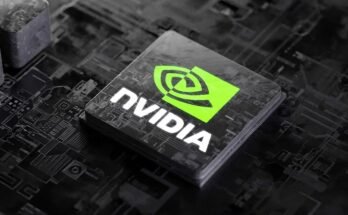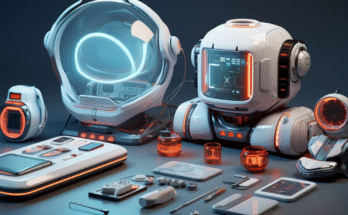What will Apple do next? After Vision Pro, artificial intelligence enhancements, and beyond
Apple Inc. has never been the apprentice of anticipation. As the years go by, its international fan base anxiously anticipates the next huge announcement, be it an innovative new product, a will-change-the-world software update or a complete overhaul of an already existing product. Since the initial iPhone, the company has had a product that has been heavily influenced by the ability of its users and product perception among the population.
Today, all eyes are turned once again to Cupertino at the middle of the second half of 2025. The heat is on Apple product roadmap, and the company is hinting ambitious new directions Specially in AI/wearables, services and maybe even device categories.
So, it is time to discuss what Apple can do next, what new innovations are expected in the industry, what the company strategy is, and how will it be able to remain on top of the situation as the industry is becoming even more competitive.
1. The ron of Apple Intelligence: Generative AI arrives to Apple Ecosystem
It wasn t until WWDC 2025 that we saw an actual AI overhaul along the lines of, appropriately named, Apple Intelligence. As opposed to emulating ChatGPT or Gemini, Apple is creating its own spin- a unique combination of on-device processing, privacy, and personalization.
The most important AI features under development:
Contextual AI (iOS 19/macOS 15): Apple Intelligence will mean more intelligent and quicker suggestions across all applications like writing help in Mail and automated summaries in Notes and more intelligent Siri commands.
Smart Siri: Siri will be smarter, expected to use natural language upgrades and improve connectivity with Apple apps and thus be conversational and much more powerful than earlier.
AI Photo/Video Editing: Apple (as well as Google and Samsung) is developing powerful editing tools into Photos. Magic Eraser, but made by Apple, and using natural gestures and respectful of privacy.
What Apple With Its AI Push Is Planning:
Apple will hardly have any mystery behind its intentions: privacy first, trustworthy AI on device, not needlessly sending your data to the cloud unnecessarily. This can be a huge point of departure in a competitive market. The way they partnered with OpenAI in integrating ChatGPT, a surprise, is well packaged. It only works with the user consenting to it and also certain queries would be redirected to ChatGPT safeguarding the actual brand values of Apple.
2. Apple Vision Pro 2: Quickper, Lighter, more mainstream
Apple Vision Pro concept The first-generation Vision Pro headset clearly impressed by having super abilities in mixed reality. Still, it costs 3,499 so it is not something everyone can afford. Next move by Apple? A second-generation Vision Pro and a lower end mass market-targeted headset dubbed the Vision.
What to Expect:
Lighter weight and improved ergonomics: Solving problems with the complaints about discomfort, created by the users.
Faster processors: Will probably be running a second generation of Apple silicon, with an M4 processor providing enhanced battery and performance.
Better App Ecosystem: As additional developers join, VisionOS is growing up fast.
Less expensive variant: There are rumors of a cheaper variant, that costs around 1,500 or 2,000 USD without such features as EyeSight or LiDAR.
The Big Picture:
It is not another headset Apple is creating, it is a new paradigm of computing. Apple aims to make spatial computing as natural as was the iPhone in 2007 with Vision Pro 2. This might turn out to displace the Mac or QPad among some users.
3. iPhone 17: Artificial Intelligence First Phones Began It All
Where Apple has never disappointed in its equipment, the new iPhone 17 line may represent an even bigger transition and push of mobile technologies towards the AI category.
Expected Features:
Refurbished Apple A19 chip featuring a Neural Engine that is specialized in AI tasks.
Resort-style button: A physical or situational button that can make AI activation within the second.
Interesting police AI camera features: auto-framing, real-time removal of objects.
New Design Tweaks: The bezels may be even thinner, and there may be a titanium version, and even Face ID under the screen (reportedly).
Apple still has its cash cow in the iPhone, and the role of iPhone 17 will be crucial enough as the device must not only please the devoted audience but also rival Samsung Galaxy AI and Google Pixel along with emerging brands of China.
4. Apple Watch X: Decade on Makeover
Ten years after the initial Apple Watch is in 2025. To mark this anniversary, Apple is said to offer a significant refresh in the form of the Apple Watch X — the most significant change since the Series 4.
What’s New:
Thinner case that attaches with magnetic band system
MicroLED display: Better focused energy-efficient
New Health Sensors: Blood pressure and perhaps sleep apnea
Improved Fitness+ Coaching in real-time using AI
The Apple play here will be to invest even more on health and longevity in this – converting the Watch into a medical grade device with personalised insights.
5. Services: Apple Subscription Empire Builds
Apple services / iCloud, Apple Music, TV+, Fitness+, Arcade, etc now bring in over $100B a year. Now what? Tightly packaged AI services and AppleCare AI.
What’s Coming:
AI-writing and editing assistant as a subscription service to pages, keynote, and mail.
Fitness + AI Trainers: Custom schedules underpinned by user body data in real time.
Apple Music Smart DJ: smart playlists of music with the selection by mood using AI.
Apple seeks to go sticky with subscriptions that will integrate the user into its ecosystem, particularly into areas such as AI, healthcare, and entertainment.
6. Mac and iPad Strategy: M4 Chips and the Future of the desktop
Apple has just released M4-based iPads and M3 Macs but the next thing they are going to do is make cross-platform AI experiences on these devices seamless.
Notable Upgrades:
MacBook Pro M4 Ultra: Due late 2025
iPadOS 19: AI-assisted multitasking and inter-app actions
MacOS 15: Developers AIs train-on-device
Apple can also test touchscreen Macs, something it has long spurned but with VisionOS and AI, the boundaries of input are being changed.
7. One Apple experience Ecosystem Integration
Even more, the next step that Apple would take is all about strengthening the so-called Apple Ecosystem. The smartening of devices will not be done at single device but at a collective level.
How?
Universal AI Assistant: Your Siri is aware of your diary, your files, your music preferences and personalizes activity on any device.
Continuity on Steroids: Resume work started on Mac, and move to vision Pro and complete them on iPhone with AI.
Private Cloud Syncing: Apple could come up with new on what you know mechanisms which stores your data, yet it is available and safe.
It is perhaps the deepest possible moat Apple could construct in an AI-first world.
8. What of This “One-More-Thing”?
iPhone maker Apple has a history of making surprise announcements and, although there is speculation that its latest new frontier could be robotics or personal mobility.
Possibilities:
Project Titan (Apple Car): The rumored electric car project has been cancelled but Apple can still make moves into the automotive industry through software or AI alliances.
Apple Home Robot: Apples against Optimus? — or Amazon Astro?
Advanced AR Glasses: A more portable version of Vision Pro intended to be used on a daily basis, potential release in 2026.
Apple may not follow along these “moonshot” ideas this year, but such are its aims in a long-term perspective.
Bottom line: The Next Play of Apple will Ride a Platform Play
Instead of a single thunderclap, the logical step by Apple is rather a multi-faceted one that involves concentrating on:
Ai-first devices development
Empowering the privacy-oriented ecosystem
Hard mods (Vision Pro, Watch X)
Developing cross-device fluency The emergence of new standards has created new expectations that involve transforming cross-device experiences into seamless processes.
In a world where AI is developing at breakneck pace, and where competitors such as Samsung, Google, Meta, or even OpenAI are competing to become leaders, the one strong point that Apple enjoys remains its comprehensive development of the combination of hardware, software, and services.
People do not simply purchase an iPhone or Watch but the walled garden of convenience that they can purchase in the form of new features, products, or updates, further locking their loyalty into place.
What is the next step of an Apple then?
Not only to be your provider of the devices – but also a good, smart life companion that you trust.




